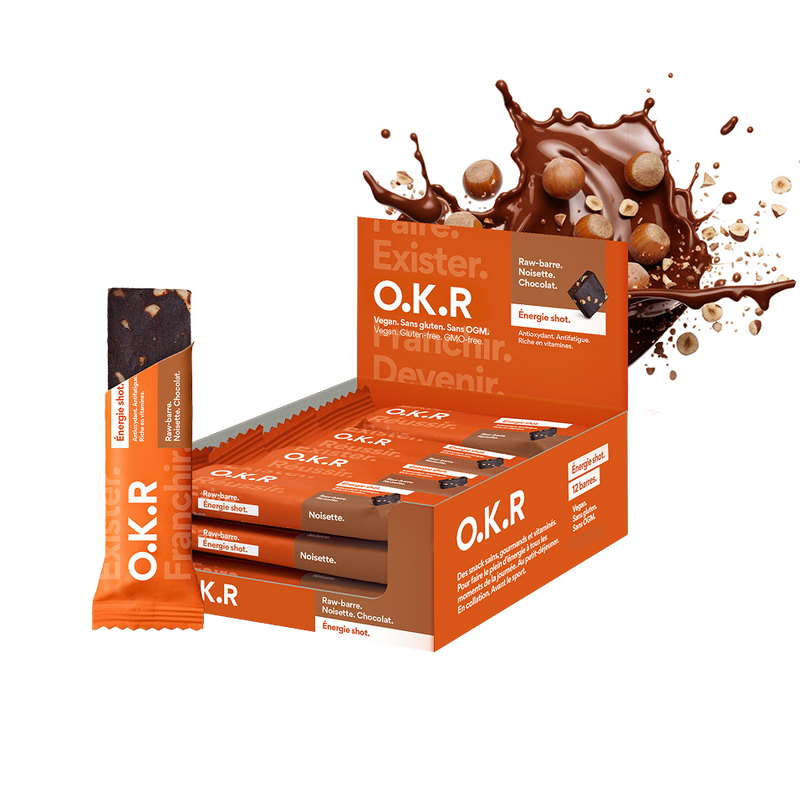To lose weight, it's essential to be in a calorie deficit. Regular physical activity and a varied, balanced diet can also speed up the process. However, some people want to accelerate their weight loss even more and decide to exercise on an empty stomach to burn fat more easily. So, does exercising on an empty stomach really burn more calories and, consequently, fat? Fact or fiction?
Reminder.
Be careful, training on an empty stomach is not harmless and must be done with caution.
What are the different energy reserves in your body?
When you exercise, your muscles need energy. To obtain it, your body has four energy reserves. Each of these reserves will be used at different times during your physical activity, depending on the intensity of your effort and the timing of your workout.
1. The creatine phosphate reserve.
Creatine phosphate is the energy element obtained by the synthesis of carbohydrate, lipid, and protein reserves. A small reserve of creatine phosphate is contained in your muscles. This molecule is instantly usable to ensure muscle contraction and therefore ensure effort. However, these reserves are tiny and only allow for an effort of a few seconds, such as a sprint (100 to 200 m) or a series of 10-15 repetitions of a bodybuilding exercise. To ensure a longer effort, you must take a break to replenish these reserves. If the exercise continues despite everything, it is the carbohydrate reserves that will be mobilized.
2. The carbohydrate reserve.
The carbohydrates you consume will either be directly used to provide energy to your organs, or stored in the liver in the form of glycogen (100g) and in the muscles (350 to 400g). After a few seconds of effort, it is these reserves that your body will mobilize to provide energy to your muscles. This process is called glycolysis. If the effort is intense, breathing will not provide enough oxygen to your muscles. Glycolysis will then be anaerobic (without oxygen). This reaction leads to the production of lactic acid, responsible for cramps and muscle burning sensations. For endurance sports (running, swimming, cycling, etc.), breathing provides enough oxygen to your muscles. Aerobic glycolysis (with oxygen) is then possible and energy production can continue until carbohydrate reserves are depleted (approximately 1 to 1.5 hours in the absence of food intake).
3. Lipid reserve.
Lipids are also an important source of energy for your body, but unlike carbohydrates, the time it takes to convert them into energy is a little longer. Therefore, lipid reserves will be mobilized during an effort lasting more than 20 minutes (cycling, trail running, marathon, hiking, etc.) and will take over or accompany glycolysis (depending on the state of glycogen reserves). This use of lipid reserves is called fatty acid oxidation and requires a sufficient supply of oxygen. It is therefore mainly involved in endurance sports.
4. Protein reserve.
Protein is the last energy source your body will use. It's definitely not recommended to draw energy from protein reserves, as this leads to muscle loss. Although protein is primarily used after the other two reserves have been depleted, the latter will actually be used throughout the workout. For this reason, it's important to include a source of protein in addition to carbohydrates in your post-workout snack to optimize recovery.
Summary.
Initially, your body will draw its energy from circulating, hepatic, and muscular carbohydrates after rapidly depleting creatine phosphate reserves. The body will then transform circulating lipids and those contained in body fat into energy. Finally, protein reserves will be called upon if necessary.
What are the benefits of training on an empty stomach?
After a good night's sleep, your glycogen reserves are almost, if not completely, depleted. Therefore, when you train on an empty stomach, your body will have no other energy reserves than the fatty acids contained in your body fat. This practice therefore allows you to reduce your fat reserves more quickly. For anyone looking to lose weight, it can actually be beneficial to train on an empty stomach to burn fat more efficiently. Wanting to train on an empty stomach is also a matter of digestive comfort. Indeed, some people take longer to digest or eat a meal too close to their physical activity. This can lead to a feeling of heaviness or bloating during exercise.
What are the risks of training on an empty stomach?
Training on an empty stomach, however, is not something to be taken lightly. When training on an empty stomach, it's important that your effort be short to medium in duration and low to moderate in intensity. These parameters ensure that you don't deplete your protein reserves and don't feel unwell. Indeed, exercising too long and intense on an empty stomach can be dangerous and cause nausea, vomiting, and dizziness, often linked to hypoglycemia, and therefore the risk of injury. Studies have shown that when exercising on an empty stomach for more than 30 minutes, you significantly increase your chances of muscle loss and blood acidification. A longer recovery time has also been observed. Your performance will systematically decrease if your exercise on an empty stomach is too intense. So, while beneficial for tapping into your body fat reserves, there's no point in considering an increase in your physical performance during this type of training.
In summary.
Here are the things to put in place when you want to train safely on an empty stomach:
- Training on an empty stomach maximum 2x/week
- 30 to 45 minutes maximum
- Consumption of a carbohydrate source at the meal preceding a morning session
- If the goal is not to lose fat mass, hydrate yourself with a BEAG (carbohydrate sports drink) to avoid hypoglycemia
- Increase your protein intake at the meal following the fasted session to optimize your recovery.













